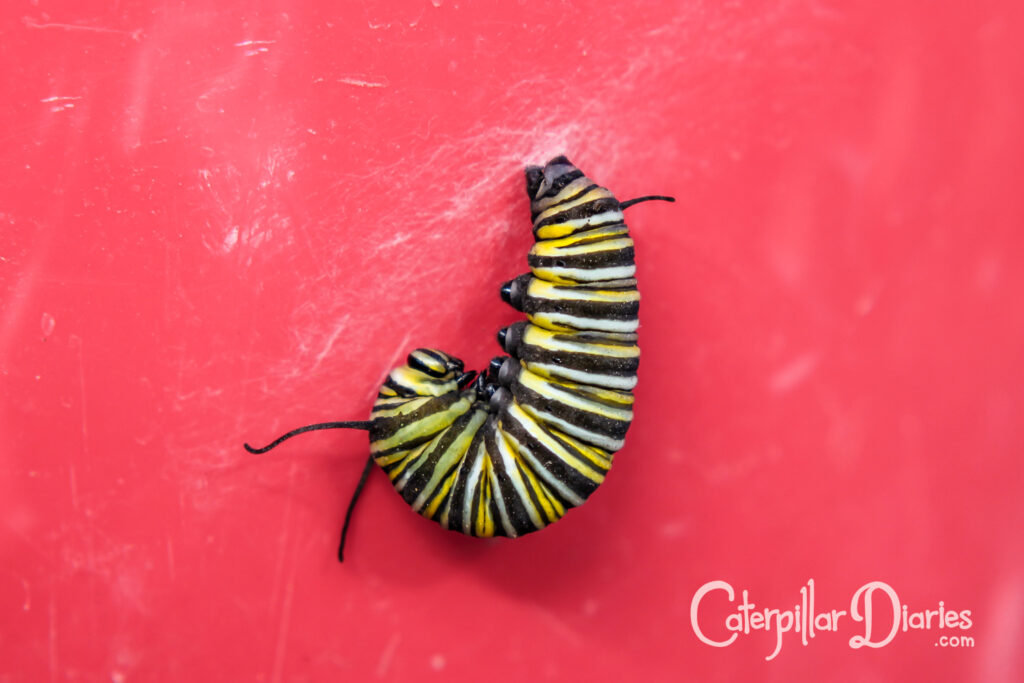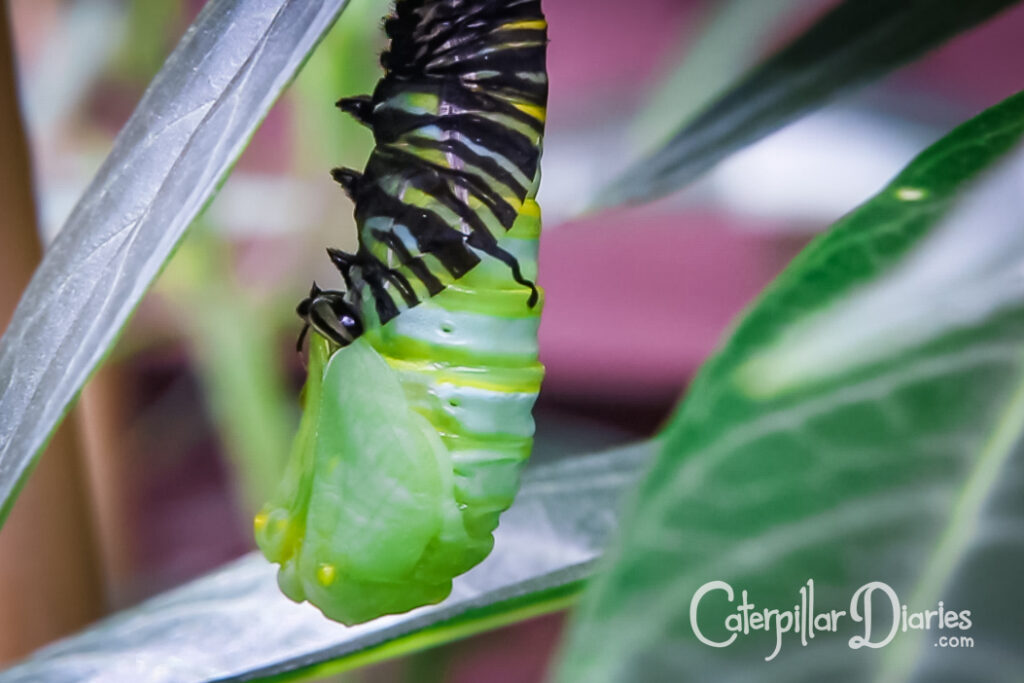
When the fifth-instar caterpillar has eaten enough (or the food has run out), it is time for the caterpillar to form its chrysalis (pupate). It finds a suitable spot that will allow it to hang, safe from predators.
The caterpillar sits still for a while (up to a day). Then it spins a pad of silk and attaches tiny hooks in its rear end to it. It will then hang from the silk pad in a “J”. In summer in New Zealand, it typically stays in the J-shape for 12-24 hours. During this time, while it is sitting still and in its J-shape, changes are occurring in the caterpillar’s body, beneath its skin. These changes are revealed when it sheds its caterpillar skin for the last time.

The visible part of the pupating process happens quickly – it changes from the J-shape caterpillar to the soft, green chrysalis (or pupa) in about 10 minutes. First, the caterpillar splits its skin behind its head. It wriggles out of its skin, then twists vigorously to firmly attach its cremaster (the black stalk that you will see at the top of the chrysalis) to the silk mat.
At first, the chrysalis looks much like a headless, legless, green caterpillar. However, as it wriggles and twists vigorously, all the caterpillar-like ridges shuffle up towards the top, and the shape changes from that of a caterpillar to that of a chrysalis. Over the next hour or so, the skin (cuticle) of the chrysalis hardens and series of gold dots form along its edges.
